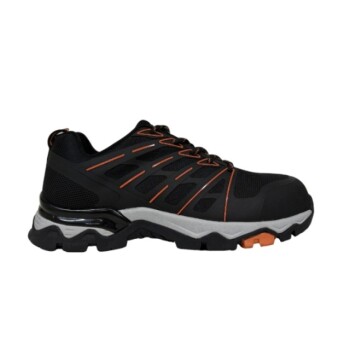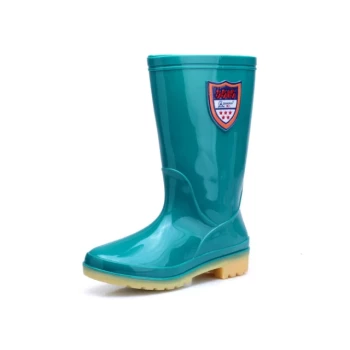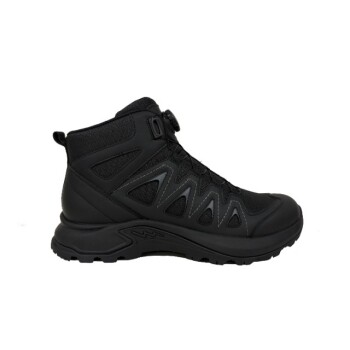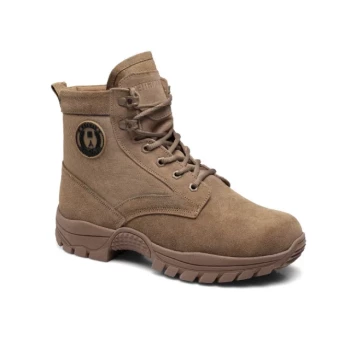To ride safely and comfortably in any weather, your motorcycle boots must balance protection from the elements with the ability to manage temperature. The most crucial features are a reliable waterproofing system for rain and cold, combined with effective ventilation or breathability to keep your feet cool and dry in the heat.
The ideal all-weather motorcycle boot doesn't exist. Instead, the best choice is a calculated compromise between waterproofing, breathability, and insulation that is tailored specifically to your primary riding climate.
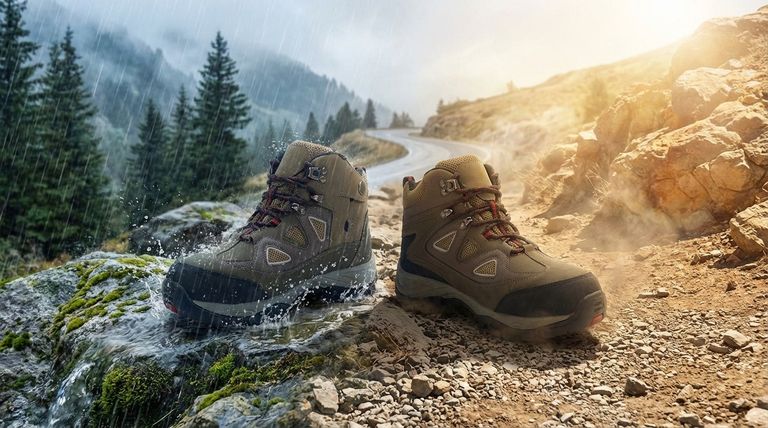
Managing Water: The Waterproofing Spectrum
Protection from water is arguably the most critical weather-related feature. Wet feet quickly become cold feet, leading to discomfort, distraction, and a potentially unsafe ride.
Water-Resistant vs. Waterproof
Many boots, particularly those made of leather, are water-resistant. This means they can repel light rain or road spray for a short period.
For sustained rain or genuinely wet conditions, you need a boot that is fully waterproof. This is typically achieved with a waterproof and breathable membrane liner that sits between the boot's outer material and your foot.
The Role of Breathability
A completely sealed, non-breathable boot will trap sweat. This moisture makes your feet feel clammy in the heat and can make them dangerously cold in the winter.
A high-quality waterproof membrane allows water vapor (sweat) to escape while preventing liquid water from getting in, keeping your feet dry from both the inside and outside.
Managing Temperature: From Heat to Cold
Your boots must regulate temperature to prevent your feet from overheating in the summer or freezing in the winter.
Ventilation for Hot Weather
For riding in warm or hot climates, ventilation is key. This is often achieved through perforated leather sections or textile panels that allow air to flow through the boot, actively cooling your feet.
These boots offer maximum comfort on hot days but provide minimal protection from rain.
Insulation for Cold Weather
In cold conditions, you need insulation to retain body heat. Dedicated winter riding boots include a thermal lining to keep your feet warm.
The amount of insulation needed depends on the temperature. A heavily insulated boot designed for freezing temperatures will be far too warm for a cool autumn day.
The Critical Importance of Grip
Weather dramatically affects road surfaces, making the boot's sole a critical safety component.
Soles Designed for Wet Surfaces
A proper motorcycle boot must have a slip-resistant sole. This is essential for maintaining solid footing when you stop on wet pavement, which may also be coated with oil or other slick substances.
The material and tread pattern are engineered to provide maximum grip and stability when you put your foot down.
Tread Design for All Conditions
Much like a tire, the tread on a boot's sole is designed to channel water away from the contact patch. This ensures a firm grip on both wet and dry surfaces, giving you predictable and secure footing in variable conditions.
Understanding the Trade-offs
Choosing the right boot involves understanding that no single feature works in isolation. Every design choice is a compromise.
The Waterproofing vs. Breathability Dilemma
The more robust the waterproofing, the more challenging it becomes to maintain high levels of breathability. A boot designed for torrential downpours will never be as cool as a highly perforated summer boot, and vice versa.
The Insulation vs. Versatility Problem
A heavily insulated winter boot is excellent for riding in the cold but becomes uncomfortably hot and promotes sweating in mild weather. A boot that can handle every season is a master of none.
This is why many serious riders own at least two pairs of boots: one for warm/dry conditions and another for cold/wet conditions.
Making the Right Choice for Your Riding
Evaluate your most common riding conditions to select a boot that solves your specific needs.
- If your primary focus is commuting or touring in variable weather: Choose a boot with a high-quality waterproof and breathable membrane to handle unexpected rain without causing your feet to overheat.
- If your primary focus is riding in a hot, dry climate: Prioritize a boot with significant ventilation through perforated panels to maximize airflow and comfort.
- If your primary focus is riding in genuinely cold weather: Select a boot with dedicated thermal insulation in addition to robust waterproofing.
Ultimately, choosing the right boot means you can focus on the ride, not the weather.
Summary Table:
| Feature | Purpose | Key Benefit |
|---|---|---|
| Waterproof Membrane | Keeps feet dry in rain | Prevents cold, discomfort, and distraction |
| Breathable/Ventilated Design | Releases sweat and heat | Maintains comfort in warm weather |
| Thermal Insulation | Retains body heat | Keeps feet warm in cold conditions |
| Slip-Resistant Sole | Provides grip on wet surfaces | Ensures stable footing for safety |
Ready to equip your riders with the perfect all-weather motorcycle boots?
As a large-scale manufacturer, 3515 produces a comprehensive range of high-performance footwear for distributors, brand owners, and bulk clients. Our production capabilities encompass all types of motorcycle boots and shoes, engineered with the precise balance of waterproofing, breathability, and grip your customers need.
Contact us today to discuss your specific requirements and discover how we can deliver quality, safety, and comfort at scale.
Visual Guide
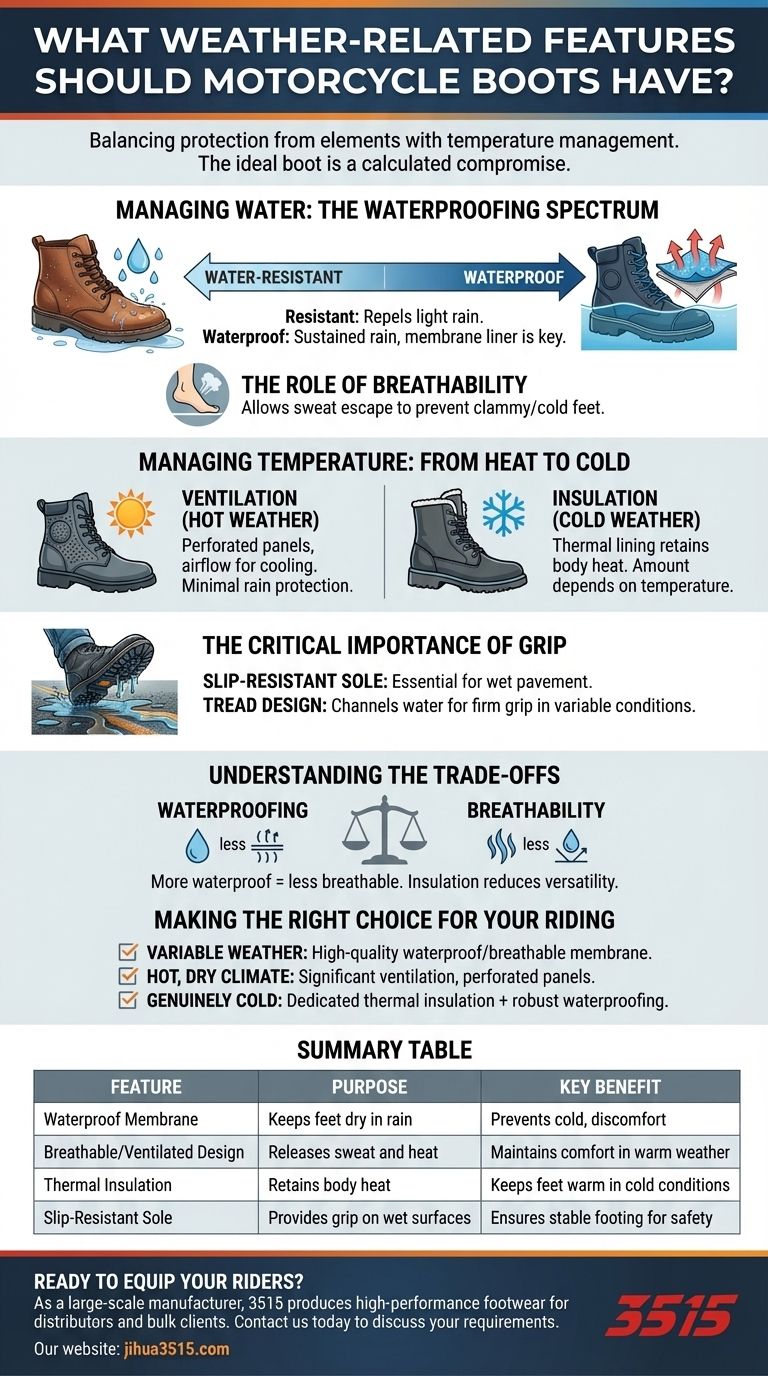
Related Products
- Safety Footwear Wholesale Manufacturer for Custom OEM/ODM Production
- High Performance Fire-Retardant Waterproof Safety Boots
- Premium Flame-Retardant Waterproof Safety Boots and Shoes
- Premium High-Cut Waterproof Safety Boots Manufacturing & Wholesale Solutions
- Premium KPU Injection Athletic Style Safety Shoes
People Also Ask
- What cultural and environmental considerations are tied to wearing shoes indoors? Balance Hygiene, Tradition, and Foot Health
- Is safety-toe as good as steel toe? Choose the Right Protection for Your Job
- How do safety shoes contribute to cost savings for companies? A Strategic Investment in Risk and Cost Management
- What are the cultural perspectives on wearing shoes in the house? A Guide to Home Etiquette & Hygiene
- What do heavy duty boots do? Protect Your Feet in Demanding Work Environments




